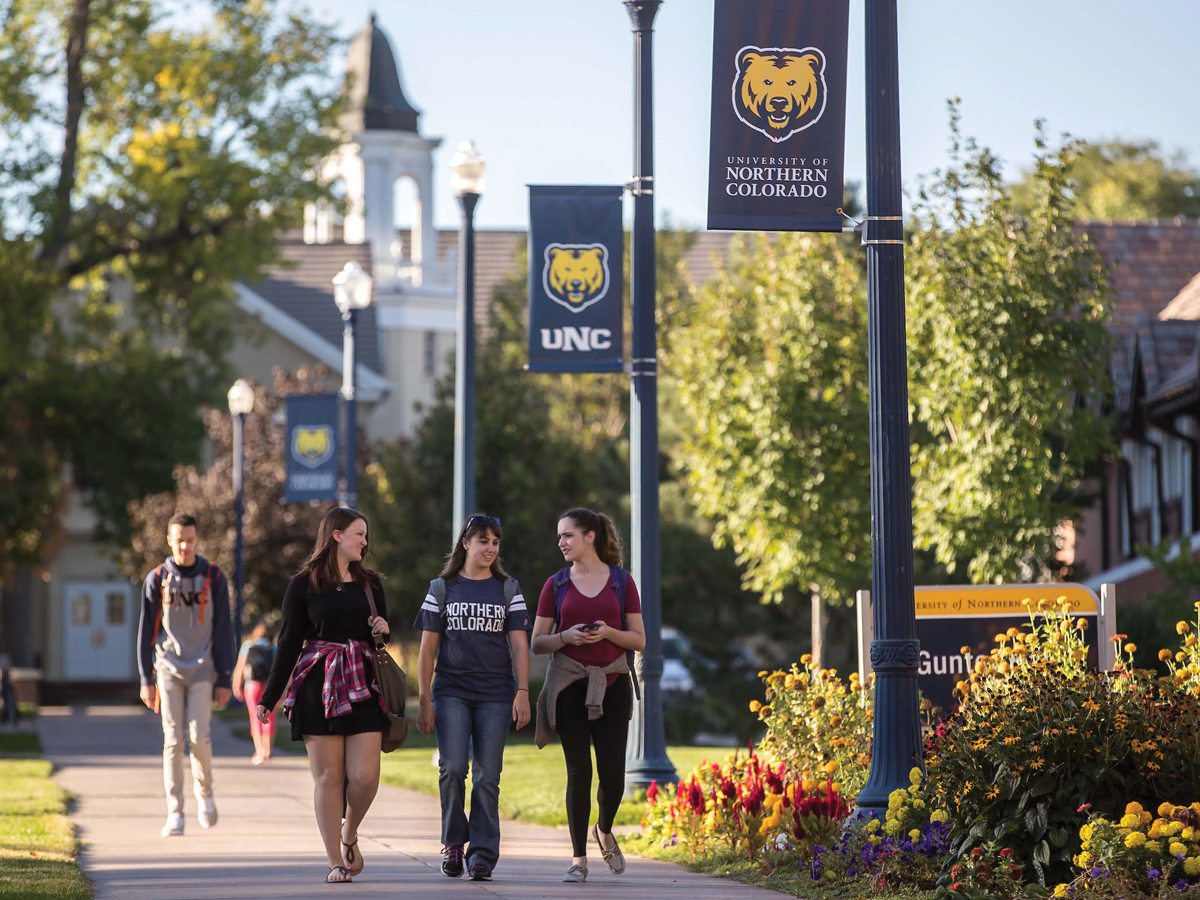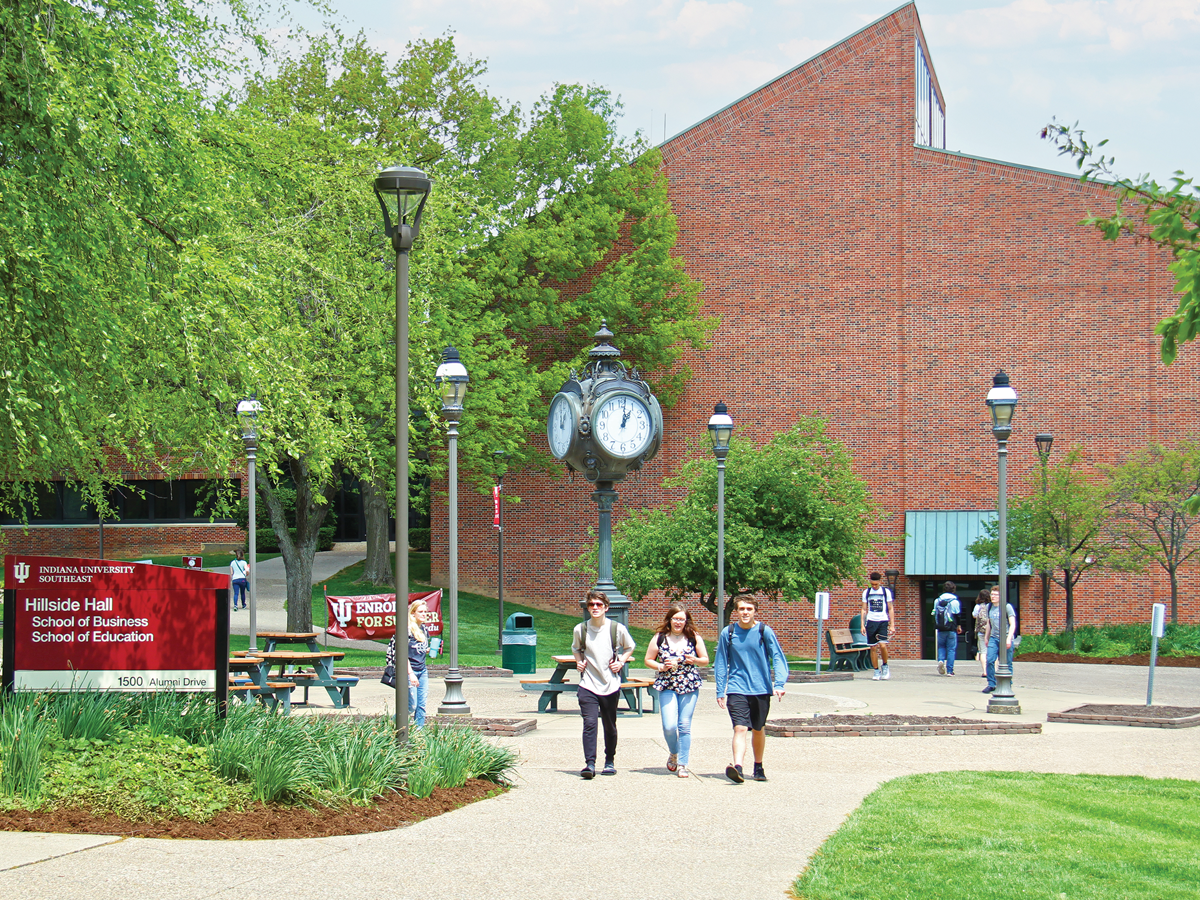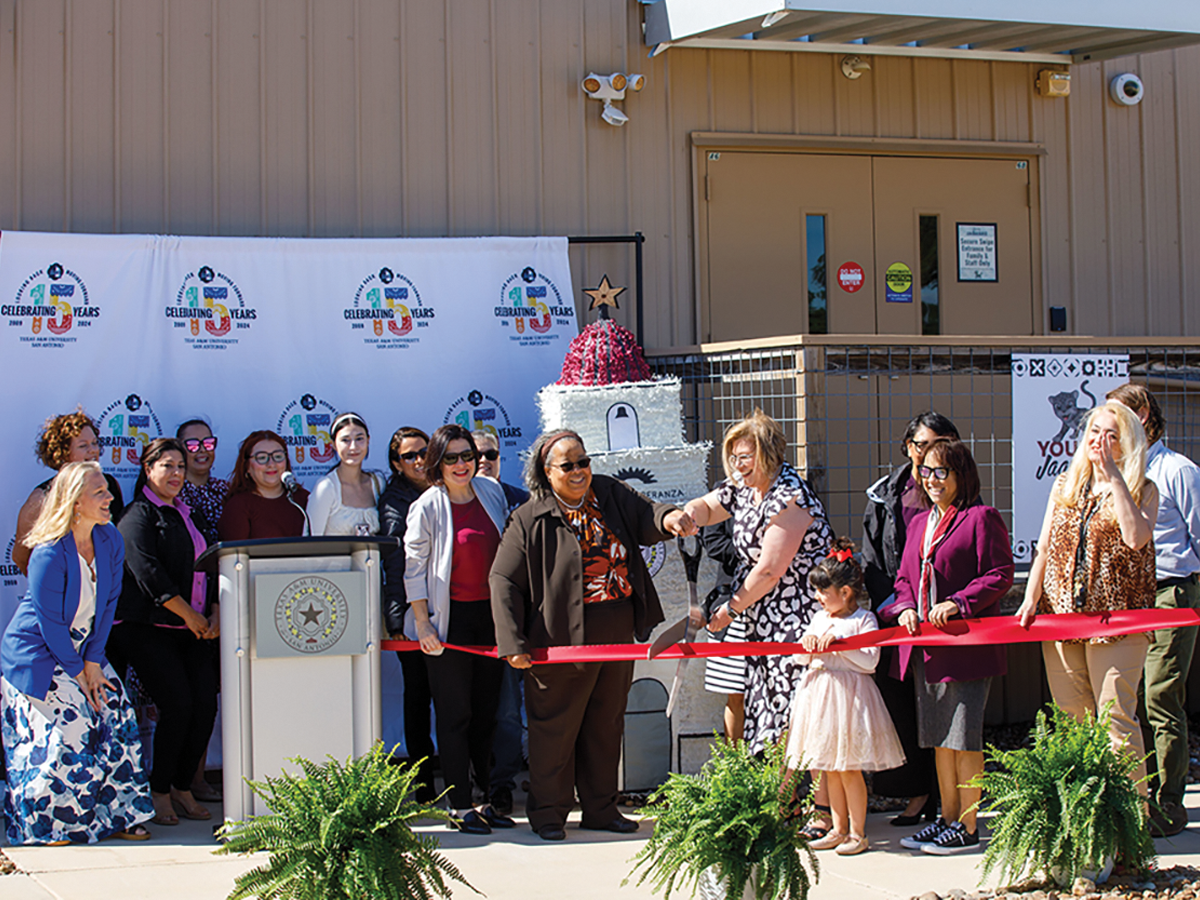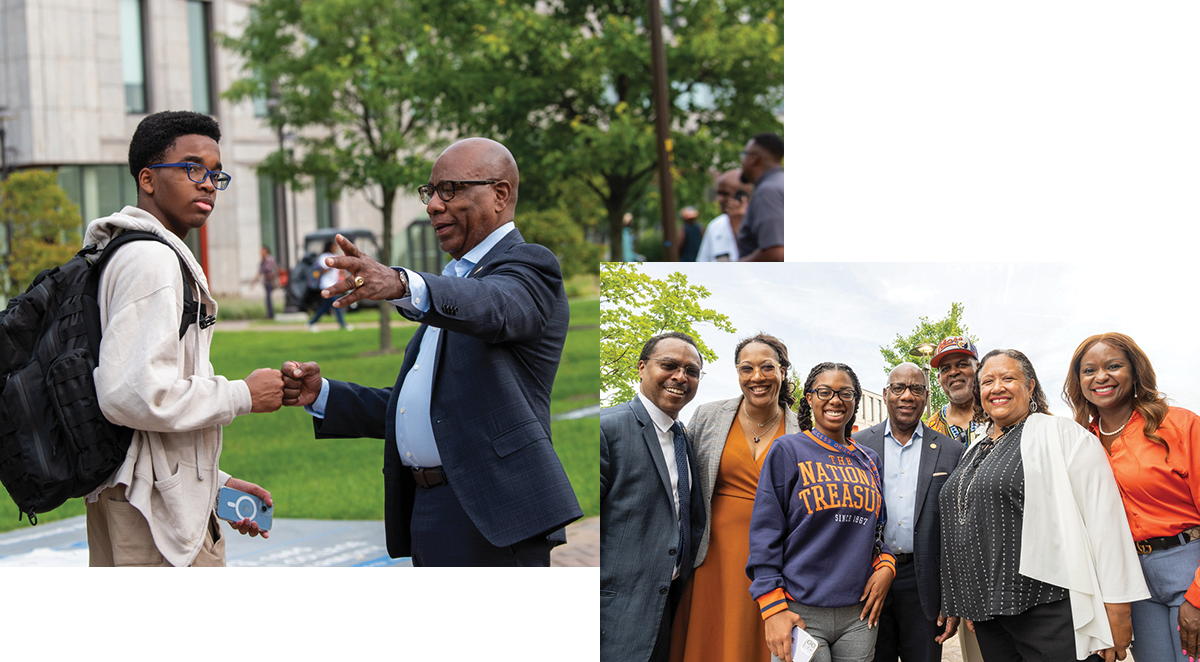
Meeting the Mission
A steady stream of discussions about the state of higher education fills our inboxes each passing week. A significant, but not comprehensive, list of the threats to higher education include the enrollment cliff; the reconsideration (and targeted elimination) of diversity, equity, and inclusion efforts across the United States; mounting student debt; an increased focus on return on investment; funding and state investments; and mergers and closures of financially fragile institutions.
Higher education professionals deal with these issues each day—in discussions with community members and constituents, the students we serve, our colleagues, and the families of those we recruit to our institutions.
While the media obsess about the latest crises in higher education from 30,000 feet, more than 500 public regional institutions are on the ground serving their communities and having real impact.
Roughly 13% of the colleges and universities in the U.S. (517 of 3,931 institutions, according to the National Council for Educational Statistics) are public regional universities, and they provide educational opportunities for nearly 30% of all enrolled college students as of fall 2023, according to the National Student Clearinghouse Research Center. Ultimately, they’re educating nearly 5 million college students across the U.S., according to the American Association of State Colleges and Universites.
Public regional universities are becoming a popular choice for college students because they are accessible both geographically and financially. They are located across all 50 states and their tuition rates are far lower than those of their larger public research university or private liberal arts college peers. They are the institutions that produce, according to a TedX Talk from higher education scholar Cecilia Orphan, “your teachers, nurses, and small business leaders.” They are the “safety schools” of lore but offer many of the most innovative and cutting-edge pathways for diverse populations of college students to prepare and obtain licensure for careers in fields like health, finance, and agriculture. They offer continuing and graduate education in the professions most plentiful in local and regional workforces. They’re also economic engines and paragons of efficiency, continuing to turn declining state investments into regional economic gains and more educated citizenries, to boot.
However, when it comes to media coverage, public regional universities don’t get much love. Local newspaper sports pages are far more likely to focus on the athletic exploits of the Power Five university programs that compete hours away, even when the college athletes at the local university win national championships. The research breakthroughs that occur at major universities dominate higher education reporting, while the local university professor who was nominated for a National Book Award or who supervised research that discovered evidence of Albert Einstein’s gravitational wave theory go unnoticed. The $100 million–plus donations that dominate higher education media coverage drown out the $20,000 estate gifts left to a local university by retired teachers who dedicated their lives to serving people in their own communities.
University advancement administrators at public regional universities continue to do the work regardless of the lack of attention or spotlight. I know because I happen to be one of them. Since 2023, I’ve served as Vice Chancellor of University Advancement at the University of Wisconsin–Stevens Point, U.S. Since 2007, I’ve worked in university advancement at public regional universities and colleges in Louisiana, North Carolina, and Minnesota. I have also written about, researched, consulted on, and presented on topics of fundraising and executive leadership across the U.S., meeting hundreds of individuals like me along the way. Despite the diversity of our locations, staff sizes, and paths that have brought us to this career track, I see several throughlines. Public regional university advancement professionals work to secure funding and support for universities with limited resources, away from the media spotlight and on behalf of the communities in which we are situated.
On any given day, far away from the discussions of crises and questions about value, a public regional university advancement professional accepts a small donation from a dedicated graduate that will provide a deserving student with a sense of renewed hope and opportunity. When I look at my peers in advancement at public regional universities, I see how they are working to replace the public perception of higher education’s crisis with confidence.
I’ve talked with university advancement executives at public regional universities across the country. Here’s how four of them—at the University of Northern Colorado; Texas A&M University–San Antonio; Indiana University Southeast; and Morgan State University in Baltimore, Maryland—are engaging constituents and alumni meaningfully and creating confidence among donors, advocates, students and their families, and local communities.

EMPHASIZING SOCIAL MOBILITY: Since 2014, University of Northern Colorado's alumni base has grown from 120,000 to 140,000, while the alumni engagement budget has been trimmed by nearly 20%. The institution—known for producing counselors, teachers, nurses, and law enforcement officials in a state that is experiencing shortages in all those fields—has emphasized its social mobility potential to students by promoting that its students graduate with the lowest debt in the state.
University of Northern Colorado, U.S.
For University of Northern Colorado Assistant Vice President for Alumni and Community Relations Lyndsey Crum, meeting student needs is 100% professional and 100% personal.
Like many first-generation, low-income college students, she pursued her education at UNC because it was nearby and affordable. She went on to obtain a law degree and work at a private university, then a public Research 1–designated institution, but her return to UNC for professional reasons was equally personal. For her, communicating to the public about the meaningfulness of investing in UNC isn’t about just branding and marketing—those investments shaped her life as well.
The advancement unit at Northern Colorado faces challenges similar to those at public regional universities across the country, such as demonstrating the value of higher education to students, engaging supporters who hope to advance their region’s interests amid resource constraints, and engaging in traditional and social media promotions.
“I hate [the phrase] ‘best-kept secret.’ I’m not interested in that. We want to be the best version of ourselves,” says Crum.
In her time at UNC since 2014, the alumni base has grown from 120,000 to 140,000, while the alumni engagement budget has been trimmed by nearly 20%. The institution—known for producing counselors, teachers, nurses, and law enforcement officials in a state that is experiencing shortages in all those fields—has emphasized its social mobility potential to students by promoting that its students graduate with the lowest debt in the state. The institution has also recruited alumni board members who are more representative of the state’s workforce to multiply the university’s advocacy efforts.
Most uniquely, a long-term reporting project that pulls in survey data and information from LinkedIn and online career platform Handshake showcases what alumni do with their degrees after graduation. This alumni employment dashboard provides information to legislators, recruiters, alumni, and donors that demonstrates the university’s return on investment to its alumni, the region, and the state. When a local funding agency learned about the dashboard and reviewed the data on how UNC scholarships produced tremendous results for the region, it decided to increase its investment.
That new investment? A $25 million gift, the largest in the university’s history, to address health care and doctor shortages in Colorado.

REMAINING IN THE REGION: “More than 50% of our students graduate with zero debt. We are a top institution for socioeconomic mobility. Alumni go on to work in business, health care, and education, and 80% of our 32,000 alumni remain in the region after graduation," says Joe Glover, Indiana University Southeast Vice Chancellor of Advancement, Alumni, and External Affairs.
Indiana University Southeast, U.S.
My discussion with Indiana University Southeast Vice Chancellor of Advancement, Alumni, and External Affairs Joe Glover began with some reminiscing about a treasured mutual colleague of ours, former IU Southeast Chancellor Ray Wallace. Wallace was the Director of the Louisiana Scholars’ College, U.S., (my alma mater) and a beloved professor of English who inspired my own career path. He was also Glover’s Chancellor at IU Southeast (Glover’s alma mater) and employer for more than a decade as he served in executive roles in intercollegiate athletics and marketing. This one public regional university professor and administrator influenced the lives and careers of two people from completely different parts of the country, inspiring us to continue his legacy of providing opportunities for students from all backgrounds to attain their educational goals.
IU Southeast’s rural setting and significant first-generation and low-income student population mean that student resources are paramount at the institution. It has seen recent enrollment gains since the COVID-19 pandemic lockdowns but has struggled in the past decade to remain a viable option for the most financially vulnerable students in the Kentuckiana region.
“More than 50% of our students graduate with zero debt. We are a top institution for socioeconomic mobility (top 20 among public regional universities in the Midwest, per U.S. News and World Report). Alumni go on to work in business, health care, and education, and 80% of our 32,000 alumni remain in the region after graduation. The talk about value and crisis in higher education drives me crazy,” says Glover.
Glover notes that IU Southeast exceeded its fundraising target by 150% in 2023. The university is particularly successful in its fundraising efforts with retired faculty who remain in the area and are deeply invested in the institution’s success. He also emphasized that students have a tremendous impact on donors, as they often provide campus tours and participate in donor meetings. They also enjoy an intimate connection to the local community through an on-campus food pantry, largely supported by private donors and coordinated by university Counseling and Psychological Services staff, with satellite locations across the university campus.

PART OF THE FABRIC OF THE COMMUNITY: Through Texas A&M University—San Antonio’s emphasis in early childhood education, Educare, the new childcare center on campus, is poised to become part of the fabric of southside San Antonio. Educare blends investments from TAMU, Bexar County, the city of San Antonio, and private donors to provide a new facility in a childcare desert.
Texas A&M University–San Antonio, U.S.
While the new President of Pasco-Hernando State College Jesse Pisors now focuses his fundraising acumen on the Florida college’s prospects, he fondly remembers his two-year stint as Vice President for University Relations and Advancement at Texas A&M University–San Antonio. TAMU-SA is a young institution; it was established in 2009. As San Antonio’s only public regional university (and the university of choice for the city’s south side) it has the power to serve local citizens’ educational and career preparation needs and also address their socioeconomic challenges, Pisors believes.
“Public regional universities are doing excellent work serving communities and delivering excellent outcomes for the investment. It’s unfortunate that mainly the worst stories about higher education end up in the headlines,” says Pisors.
TAMU-SA’s unique ability and positioning to serve this distinct nexus of needs provides an opportunity to connect San Antonians with no formal connection to the institution.
“One of the leadership keys in higher education is to train ourselves not to miss the key moments where philanthropists, communities, and universities align. We too often miss the opportunities to develop these kinds of programs at rural and regional universities. [We have to] be the best at what we are the best at and resist the temptation to do what other universities do,” he says.
TAMU-SA identified a relationship among needs in its local community, workforce opportunities, and the university mission by focusing on the region’s need for childcare. Through the university’s emphasis in early childhood education, Educare, the new childcare center on campus, is poised to become part of the fabric of southside San Antonio. Educare blends investments from TAMU, Bexar County, the city of San Antonio, and private donors to provide a new facility in a childcare desert. As important, it opens the door to philanthropic partners who may have had no connections to TAMU-SA and to investment opportunities that benefit community members, university students, and employees.

ATTRACTING NEW INVESTMENT: Morgan State University’s latest pursuit of Research 1 designation poses a transformative opportunity to develop pipelines of HBCU undergraduates poised for careers in research and attract new investment outside of the university’s traditional alumni and Baltimore-area donor base.
Morgan State University, Baltimore, Maryland, U.S.
Endia DeCordova accepted the Vice President of University Advancement and Executive Director of the Morgan State Foundation role in the summer of 2023—arguably the most transformative stage of the institution’s history. MSU’s storied history as one of Maryland’s four Historically Black Colleges and Universities makes it one of the preeminent urban public regional universities in the country. The university’s latest pursuit of Research 1 designation poses a transformative opportunity to develop pipelines of HBCU undergraduates poised for careers in research and attract new investment outside of the university’s traditional alumni and Baltimore-area donor base.
“The cultural shift among alumni and donors is happening—they are learning about and wanting to know more about how research impacts the institution and students,” says DeCordova. “Personal giving might be toward nonresearch areas, but their employers may want to engage in the research component. Institutional advancement is playing a critical role in Morgan’s R1 ascendancy. Telling the story to our constituents is crucial and it will create so many more opportunities to solve problems in our local community and the world.”
Enrollment is consistently growing, reaching 10,000+ students for the first time in the university’s history, making MSU one of the five largest HBCUs by enrollment. Two of the largest gifts in the university’s history—including a $40 million investment by philanthropist MacKenzie Scott—leveraged the creation of centers of excellence and endowed faculty positions that enhance MSU’s prestige. Programs as unique as the Center for New Media and Strategic Initiatives, Center for Urban Health Equity, and Center for Urban Mobility and Equity enhance strong existing programs at the institution and add to its research productivity and relevance to private, governmental, and corporate investors.
DeCordova’s focus is now growth in advancement services, corporate and foundation relations, and prospect research areas. But as an experienced advancement professional and a “Morganite” (MSU alumna), she is in the right place at the right time both for herself and for the institution’s advancement unit.
Inspiring Confidence
Amid prevailing conversations about the public’s declining confidence in higher education and the purported diminished value of a college degree, public regional university advancement units are delivering on the promise of public higher education. What these institutions provide in the way of education, service, and workforce preparation to low-income students, first-generation students, students of color, and rurally located students helps create opportunities in communities across the U.S.
Ultimately, public regional university advancement teams can help replace this perception of crisis with confidence. University advancement professionals play a unique and pivotal role in shaping public perception about the value of higher education. Because we connect the public to our institutions and vice versa, we hear about crises of faith and confidence, but we also hear stories of inspiration and hope. We solicit and acquire resources to address the direst needs of our institutions and the communities we serve. We hear the noise, but we also detect the signals within it and provide pathways to break down unnecessary silos and barriers between and within institutions.
About the author(s)
William Broussard is Vice Chancellor of University Advancement and CEO of the University of Wisconsin–Stevens Point Foundation. He is the author of Public Regional University Fundraising: Under the Radar, Below the Fold.
Tags
Article appears in:

July - August 2024
Creating a Global Network: Dutch alumni teams extend their international reach. Also, meaningful donor and fundraiser relationships, meeting the mission at public regional universities, and connecting the pieces on a community college brand refresh.


